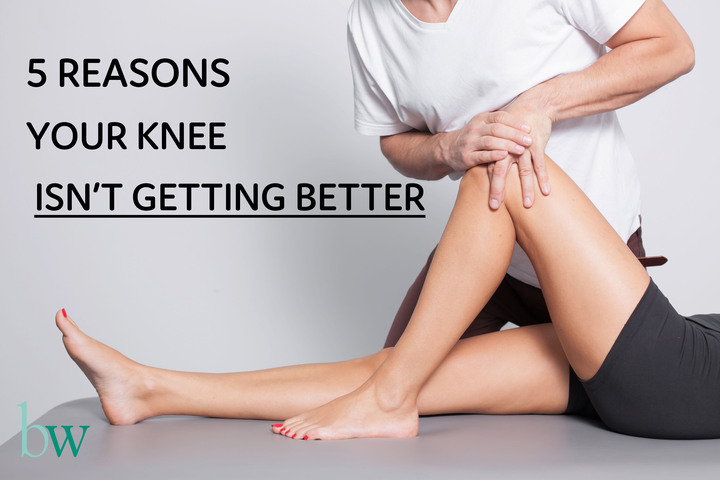Earlier this month I had a gentleman come in complaining of long term (5+ years!!) pain in his knee. He’d had 2 rounds of surgery on the knee with no improvement.
During my assessment I found that he had an even longer history of lower back pain and hip pain.
So rather than focus on his knee, we focused on his back, I taught him a couple of little tricks and . . . he walked out with no knee pain. Me, his wife, their friend, we were all in tears at the transformation.
All that time, pain and surgery and no one had ever taken the time to listen to him or look at the connections.
No one had ever done a thorough, clinical assessment.
Pain comes limping in
Knees and backs make a fantastic team – and they often pick up the slack for each other so they always have to be assessed together.
When you have a painful knee you unconsciously change how you walk. You stop extending it fully and using all the muscles and flexibility in that leg. But you still have to move forward.
So your lower back “picks up” the leg to help.
Which means your back works harder than usual.
Eventually, if your knee doesn’t return to “normal” function your back continues working too hard. And starts to complain. And complaining muscles feel sore.
Put more “miles on the clock” it can start to complain. Which makes living the active life you came to Spain for, more uncomfortable.
5 steps to success
If you’ve been having treatment with no improvement here are my 5 top reasons why:
- It’s not your knee – when you spoke to someone about your knee pain they never bothered to check all the joints attached to it – feet, ankles, hips, lower back. Problems in these areas can get referred to the knee. The best treatment in the world isn’t going to help if it’s in the wrong place!
- No one told you it needs to be STRAIGHT – We tend to focus on bending the knee, but if it doesn’t straighten properly it can change how we move our hips and lower back, affect nerve function and muscle strength.
- You got an injection – corticosteroids are a fabulous short term / emergency pain relief. They are NOT a treatment. They just hide the pain rather than treat the cause. Long term they can start to damage the tissues inside the joint.
- You got an MRI not an assessment – more and more research shows that MRIs don’t actually tell us what is causing pain. All they show is what your joint looks like on in the inside. They don’t tell us how you move, what the other joints are like, when it happens . . ..
- You skipped rehab after surgery – so now the other knee hurts because you never got full function back in the first knee. Or your back hurts. Or the same knee still hurts because the other issues weren’t addressed.
For more information and research on how to beat knee pain check out our website www.TheBodyworksClinic.com, our Facebook page Bodyworks Health Clinic or call us on 952 83 151.


